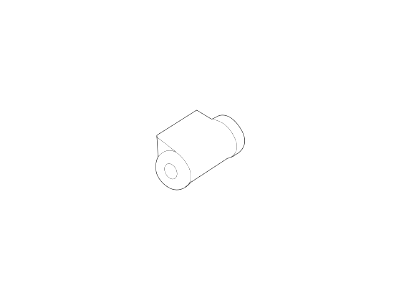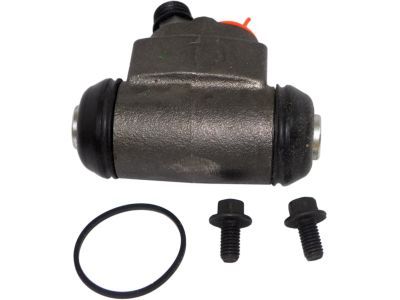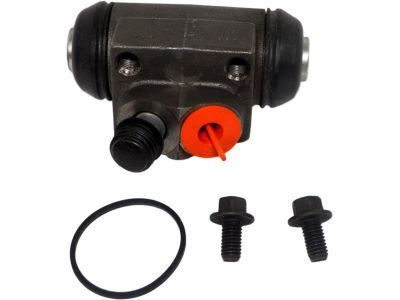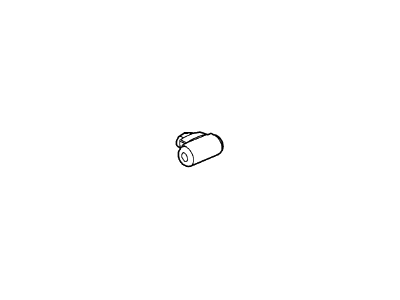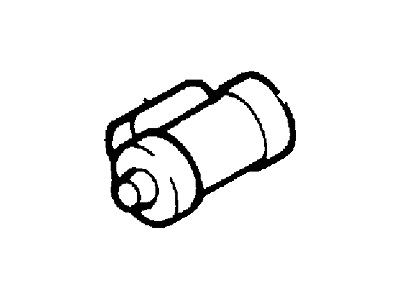

My Garage
My Account
Cart
Genuine Ford Focus Wheel Cylinder
Brake Wheel Cylinder- Select Vehicle by Model
- Select Vehicle by VIN
Select Vehicle by Model
orMake
Model
Year
Select Vehicle by VIN
For the most accurate results, select vehicle by your VIN (Vehicle Identification Number).
6 Wheel Cylinders found
Ford Focus Cylinder Assembly - Rear Brake
Part Number: BV6Z-2261-A$23.64 MSRP: $38.55You Save: $14.91 (39%)Ships in 1-2 Business DaysFord Focus Cylinder Assembly - Rear
Part Number: CP9Z-2261-A$23.64 MSRP: $38.55You Save: $14.91 (39%)
Ford Focus Wheel Cylinder
The Wheel Cylinder in Ford Focus automobile is an important part or the hydraulic drum brake system with an aim of applying pressure on the brake shoes to the brake drum to stop the vehicle. Its working principle is based on movement of hydraulic pressure which pushes the pistons inside the cylinder and so forces the shoes against the drum. Academic literature often divides the construction of a basic manual flutter valve, and ids where, including a central cylinder, two pistons with rubber seals, and an expander spring With modern, it is frequently cost of rust immune aluminum compared with older cast iron designs. Over the years that Ford Focus has been in production, the car manufacturer has used different types of Wheel Cylinder among them the dual single-piston. In this respect, despite the fact that the basic purpose of both retains the same, there are variations insofar as materials used and construction are concerned which may influence resourceness and efficiency. This is because if the wheel cylinder has small leak or even a sign of rust the braking force is slightly compromised which means either the Wheel Cylinder or the Assembly needs to be rebuilt or replaced to deliver its optimal performance with the Ford Focus.
We provide a wide range of Ford Focus Wheel Cylinder at the best prices possible. If you need Ford Focus Wheel Cylinder, you can shop with confidence on our website. All our OEM parts come with a manufacturer's warranty and are delivered to your door step with a fast delivery service.
Ford Focus Wheel Cylinder Parts Questions & Experts Answers
- Q: How to remove and install the Wheel Cylinder on Ford Focus?A:While planning the work, enquire on the status of parts such as the wheel cylinder or overhaul kit/seals. If there is presence of fluid on the Brake Shoes originating from the wheel cylinder, then they have to be replaced and, in general, although only one side might be affected on the two sides of the vehicle, the shoes are replaced. This is to make certain that the correct wheel cylinder was purchased and that the wheel cylinder put in should be of the same size on each side so that equal pressure is applied when the brakes are being applied. You should start with the removal of the break drum and then try to cover the master cylinder reservoir on the case you are pulling off the brake hose, seal it with the cellophane or by clamping the flexible hose on the master cylinder brake hose clamp. Spread the brake shoes at their upper ends to provide space for the wheel cylinder to pull out and enable the holding of the automatic adjuster. Remove dirt around the hydraulic fitting in the rear of the wheel cylinder before slackening the union nut and then the two bolts joining the wheel cylinder to the backing plate, after releasing the brake pipe union nut. Disconnect the wheel cylinder from the backing plate, using clips, stuffing the open hydraulic unions with pieces of cloth to avoid dirt, getting into the cylinder and also to avoid fluid from coming out. At the time of composing this article, there were no overhaul procedures and the repair parts for the wheel cylinder, as such, it is advisable to replace the entire wheel cylinder. Remove the plug of the hydraulic pipe and back up the backing plate and ply the RTV sealant at the wheel cylinder-to-backing plate surface and then fit the cylinder securely and then fasten the hydraulic fitting nut with hand-tightening. Torque the mounting bolts and go on to engage the hydraulic union nut and bring it to the required torque. Pull the plunger rod of the automatic brake adjuster mechanism to pull the brake shoes closer to the wheel cylinder pistons by applying some force and exerting pressure on the adjusting knob, which is located at its extreme end and turning it anti-clockwise to its minimum extent. If necessary, pull off the clamp of the flexible brake hose or cellophane of the master cylinder, and then put on the Brake Drum. Drain out the hydraulic system, meaning which appropriate measures should be taken to reduce the loss of the fluid, it should only be necessary to drain out the relevant back brake. Last but not the least, test the brakes again with a lot of caution before the car is put back to standard use.
Related Ford Focus Parts
Browse by Year
2018 Wheel Cylinder 2017 Wheel Cylinder 2016 Wheel Cylinder 2015 Wheel Cylinder 2014 Wheel Cylinder 2013 Wheel Cylinder 2012 Wheel Cylinder 2011 Wheel Cylinder 2010 Wheel Cylinder 2009 Wheel Cylinder 2008 Wheel Cylinder 2007 Wheel Cylinder 2006 Wheel Cylinder 2005 Wheel Cylinder 2004 Wheel Cylinder 2003 Wheel Cylinder 2002 Wheel Cylinder 2001 Wheel Cylinder 2000 Wheel Cylinder
